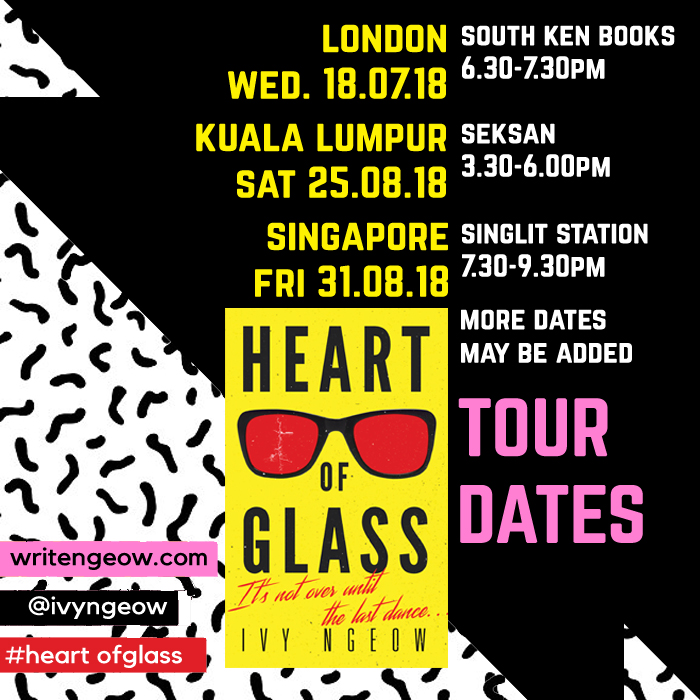 Without risk of cultural appropriation or misrepresentation or just being plain offensive.
Without risk of cultural appropriation or misrepresentation or just being plain offensive.
Diversity is a buzzword we all may at some point encounter. I have written from white, mixed and Asian people’s viewpoints and can say I am fairly comfortable now. My published stories or novels have a mixture of different cultures and it is something that I grew up and am familiar with because I was born and raised trilingual in an urban environment in Johor Bahru, the industrial southern city of Malaysia. To me it is more normal and natural that everybody is unique and different than everybody looking and acting the same, eating the same food, going to the same places, speaking the same language. Writers, if you have not had the privilege of a diverse upbringing, I will give you the secret now on how to absolutely crack the code of writing your diverse characters.
1. Switch off your spell check.
This is very important. Do not proceed until you have done this. Do yourself a big favor and free yourself of all Judeo-Christian terminology, grammar, language, spelling. You will enter foreign now. Food, words, culture, syntax and they will not be underlined in red wavy lines and they will not be removed or changed by auto correct. Train yourself to always listen to real conversations, on the bus, in restaurants, on the streets, and write them down phonetically. I had listened to probably hundreds of Aunties (who are just women older than you by at least 16 years and not really aunts) which made writing the character of Auntie in my novel Heart of Glass a breeze.
‘Siu-cheh, if you wan’ lunch, I fix now.’
I stared at her. Threw my hands in the air. She knew everything.
‘What you wan’ eat?’
‘Anything.’
2. ALL culture is appropriation
We all learned it, right? Our families and our communities gave us our culture and traditions. Now find out what culture means to YOU as a writer and you do this by working with BIG themes. Jot down the themes in each culture that you know. The themes in Asian families, for example, are the 4 Fs: family, food, frugality, freedom. When you realize that many cultures including white cultures (eg Jewish, Italian, Arabic, African etc) have these very same themes, you will realize what we know and are close to is infinitely what is called the human condition, why we are here. It’s the cliched phrase which comforts writers that we are not as different as you think and that we should find the similarities in each other not the differences. Books bring people of the world together. Our job as writers is to bring the ideas which bring books together.
3. Embrace, don’t avoid stereotypes
It is the only way to challenge and smash them. For example, in Heart, I’m writing from the viewpoint of an American girl of Chinese origin, Li-an. At some point she was bound to eat Chicago hot dog, especially when Paolo suggests it to her.
‘Gimme a dog wid everythin’,’ he said. ‘Make dat two.’
At some point also, Li-an was bound to eat Chinese food. She was in Asia and she’s Asian, right? So why would that be a stereotype?
I hung up and put my feet back up again. I had jasmine rice, peppers
and fried monkfish with a coriander sauce for lunch. I played
guitar all afternoon. I wrote down melody lines and chord changes.
I wanted to be happy here, but I struggled to imagine just playing
the piano and living in a gilt cage called the pavilion.
Your reader is not interested in something ordinary or bland but the context of the detail, even if it’s a poor man’s meal like burger and chips or rice with soy sauce, it has to glitter. I especially like Crazy Poor and not Crazy Rich characters because the poor have so many more things to crave and die for. What keeps them craving for something? Your reader is interested in the finer detail of what it it means to be white, mixed, Asian or whatever, and what it means to be alive. All details will add to authenticity of the character and the voice. You can show they are poor or rich or mean or kind by the detail in the stereotype that you are challenging.
4. Practice writing a few characters
Some may work, some may not, and some may come to you easier than others. In Heart I had three main characters, Ben Mizrai, a Jewish DJ from NY, Paolo, an Italian businessman from Chicago (Chi-town, Windy City etc) and Li-an, the main character who is half Irish and half Singaporean Chinese. All have their own quirks and language. I made sure that I practiced a few times to make sure that everything that they said or did or ate was in character and not just because they were Jewish, Italian or Chinese. For your practicing, you could try a young Japanese soldier or an elderly Chinese lady. Or a pretty Chinese girl student looking for fun. These are all characters which you may find easy or hard to get into, depending on how it comes out in when you figure out what they say or do. Try on a few hats. It is just like being in a costume shop in front of a mirror.
5. Ready, SET, go
Use settings and movement between settings to inspire and arouse your imagination for the depth of your characters. For example, try a huge modern Japanese city, a tiny rural village in China, or in my case, Chicago’s Chinatown and Macau’s seedy casinos and Docklands area. Already you have a sense of the characters needs, conflicts and culture. This is because of the hybrid element in the cultures of diverse characters. As Li-an says, she is living in her fifth culture. Her first and second are Irish and Chinese as she is of mixed parentage, she has never been either countries of her parentage. She was born in Singapore – that would be her third culture, moved to Chicago – that would be her fourth, moved to Macau – that would be her fifth.
We as writers are all these places and all these things, we just turn them into stories. What all humans crave are stories, stories to inspire, to move, to teach, to entertain. If your stories work, you would also know that it would not matter what ethnicity the characters are. Bring them to life. Writing diverse Asian characters is just another way of writing an aspect of yourself, whoever you are.
Are you writing Asian characters and did you find it pretty easy or tough? As usual I would love to hear from you. All feedback and questions are welcome.
Ivy Ngeow was born and raised in Johor Bahru, Malaysia. She is of Malaysian Chinese origin and the author of two novels. Cry of the Flying Rhino (Proverse Hong Kong), winner of 2016 International Proverse Prize, is her debut set in Malaysia and Borneo. Her second novel Heart of Glass (Unbound UK) was set in Chicago and Macau. She is fond of margaritas, seafood tacos, Americana and all things vintage. She lives in London and is in her ‘third culture’.
#heartofglass #cryoftheflyingrhino Tweet me: @ivyngeow

